Non-aircraft carriers and their aircraft. A little about ersatz aircraft carriers of the 80s
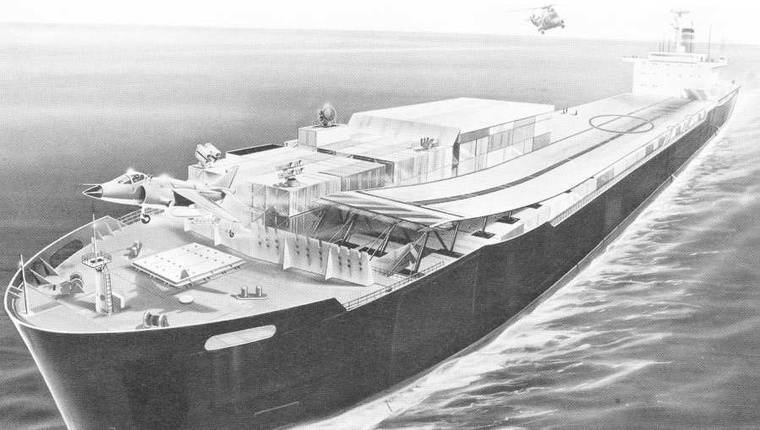
The use of non-military vessels for military purposes has a long history history in world fleets... There are countless examples. This is due to a simple fact - it is technically impossible for any country to have and maintain a military fleet large enough to meet the potential needs of wartime in peacetime. There is really no way out - for any naval war you have to mobilize ships from the merchant fleet, and woe to the country that does not have one.
Examples of various kinds of auxiliary cruisers, raiders, British Q-ships hunting them, steamers converted into minesags, ships converted into military transport, and improvised landing craft (up to the dredger used during the Kerch-Feodosia landing operation) are known to everyone.
A particular case of such events is more interesting - the use of converted (not to be confused with those built on the basis of a civilian project, such as "jeep-carriers") commercial and other civil vessels for basing on them aviation.
It is also known that while the German Condors were the main threat to the Atlantic convoys, the British used catapults on merchant ships to launch fighters. When a German aircraft approached, such a fighter was launched from a catapult, intercepted (or drove away) the Condor or a flying boat, and landed on the water, after which the pilot was picked up from boats, boats or escort ships of the convoy. True, once the pilot made it to Soviet territory.
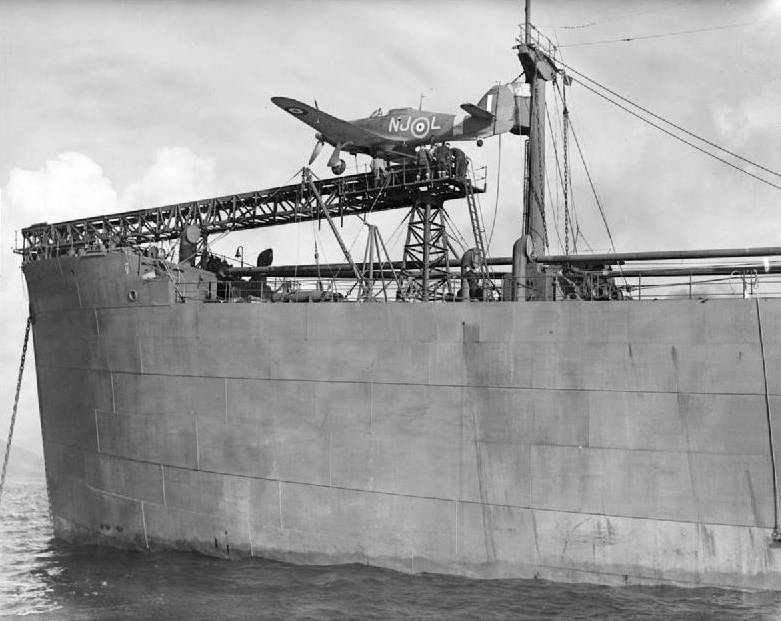
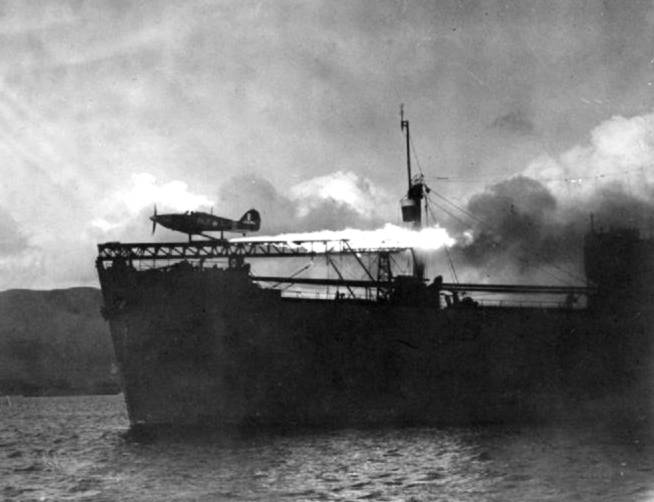
The debut of American helicopters in the Pacific theater of operations during World War II was also carried out from the converted US Army floating workshops. Prior to this, the US Coast Guard tested its helicopters from the converted vessel Governor Cobb. For more details see the article "Helicopters on the fronts of World War II".
During the Cold War, old ideas returned. And the issue of basing aviation on converted merchant ships has become urgent again. It makes sense to recall some projects from the end of the Cold War.
British in the Falklands
The Falklands War made the dead Atlantic Conveyor widely known, but it was not, generally speaking, the only air transport mobilized.
First, a few words about the Atlantic Conveyor itself.
This ship belonged to the type, which in domestic terminology is called a "ro-ro-container carrier", that is, it was suitable for transporting containers and self-propelled equipment at the same time.
The ship was hastily refitted.
One of the main weaknesses in the conversion was that the British simply did not have time to do everything right - the operation in the Falklands had to be completed before the storm season in the South Atlantic. This dictated the pace, and he made careful preparation impossible.
The British provided the ship with Harrier aircraft, helicopters and a large amount of ammunition.
The latter, however, did not have special rooms with fire extinguishing systems and structural protection, but were simply folded into containers. The decoy launchers were not mounted, which would have guaranteed to save the ship from the primitive seeker of the Argentine anti-ship missiles.
The result is known.
There are still people who are convinced that the Atlantic Conveyor was an ersatz aircraft carrier.
This is naturally not the case.
The ship had an airstrip, from which the Harrier, taking off vertically (which meant - without weapons), could have flown to an aircraft carrier nearby.
Helicopters were supposed to fly from it. This vessel could not be used as an aircraft carrier. And, from this point of view, Atlantic Conveyor is not a completely “clean” example. But it is impossible not to mention it.
The Atlantic Conveyor was not the only such vessel - its sister ship, the Atlantic Causeway, went to war with it. Almost the same ship was used for the same. On this transport, captured Argentine attack aircraft IA-58 Pucara were delivered back to Britain. Converted, however, it was slightly different.
It is worth mentioning the air transport that transported the helicopters.
First is the Contender Bezant, pictured below. The transport also returned from this war unharmed.
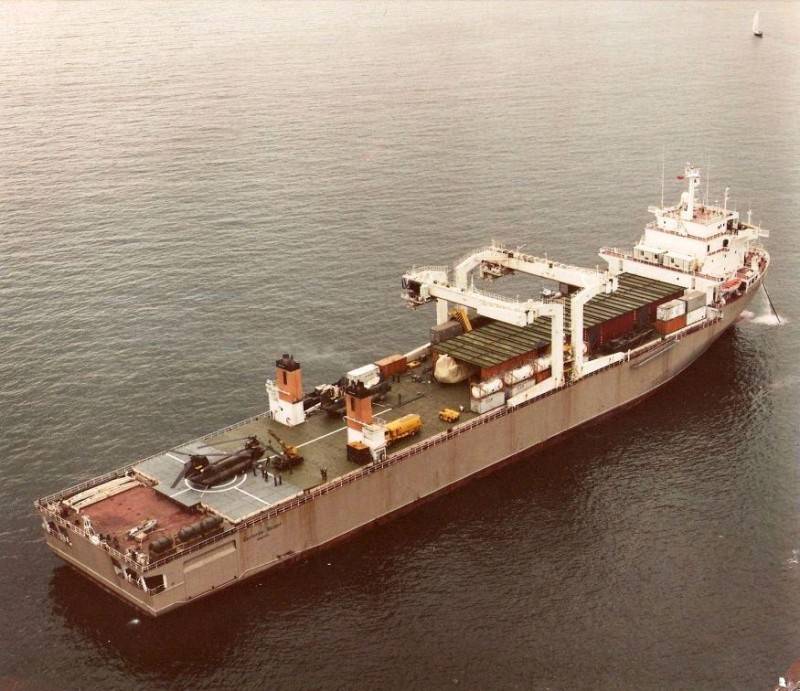
Moreover, it was once again converted into a military transport and is still in the ranks of the auxiliary fleet as "Argus" (RFA Argus).
But the next British unit is much more interesting.
So, get acquainted - "Astronomer".
As well as "Atlantics" - a ro-ro-container ship. Built in Poland (in Gdansk) in just six months, this vessel began to work for the shipping company Harrison Lines. When Argentina captured the Falkland Islands, this ship, like others, was mobilized and used as a military transport.
Like the ships mentioned above, the Astronomer was supposed to deliver helicopters too. Hangars for helicopters were mounted in the bow of the Astronomer hull, and in the middle of the hull, where the swinging amplitude is minimal, there was a landing pad. In this form, the ship passed the Falklands. And in this form it remained to serve in the Royal Auxiliary Navy.
After the Falklands, a new turn took place in his fate, because of which, perhaps, we should call him a ship.
If in the Falklands the task of all these transports was simply to deliver aircraft and cargo, then this transport was to go to war, where it would perform real combat missions.
ARAPAHO and the British attempt at implementation
Let's go overseas.
Intensive preparations for a war against the USSR raised the question for the Americans - who, if anything, will guard the ocean convoys?
By that time, it was clear that hunting convoys in the style of Karl Dönitz's unshaven boys was not the main task of the Soviet submarine.
However, firstly, possible successful operations of the Navy against the United States and NATO could still lead to this. Secondly, attacks on convoys could not be ruled out anyway. In any case, the Navy regularly practiced the penetration of submarines through the Faroe-Icelandic barrier.
In such conditions, the Americans could find themselves in a situation where no forces are enough to simultaneously conduct high-intensity military operations against the Soviet Navy in the North and the Pacific Ocean and to defend Atlantic, and, in some cases, Pacific convoys.
This problem gave rise, for example, to the concept of "sea control ship", Sea Control Ship - SCS, which the Americans themselves did not implement later, but which they "threw" to their NATO allies.
As a result, Spain and Italy began to build ships optimized for such tasks, and the British "Invincible-class" before the Falklands were considered in the same vein.
In fact, by the mid-80s, the United States could count on at least four such ships in the Atlantic. In Asia, Thailand bought such a ship for itself. And if the United States happened to fight in the Pacific or Indian Oceans, the loyal Thais would not have left their main ally alone. Especially considering that this would give them the opportunity to get even with Vietnam, and Kampuchea-Cambodia, and the USSR, which supported these two countries against Thailand.
Nevertheless, the forces available at the end of the seventies were clearly not enough.
Some in the United States considered the natural response to the "not enough ships" situation to mobilize existing merchant ships and re-equip them into some kind of escort ship armed with anti-submarine and search and rescue helicopters and a minimal set of weapons.
Some theorists believed that such ships should be armed with vertical / short takeoff and vertical landing aircraft, that is, "Harriers".
They were supposed to be used for the same purpose as on the "ships of naval control", that is, to destroy the Tu-95RTs, which, in the opinion of the Americans, would have directed Soviet submarines to their convoys, like the German Condors in World War II.
This is how a project called ARAPAKHO was born in the USA.
Initially, it was about taking a container ship, mounting a take-off and landing pad on it, sonar equipment in containers, fuel supplies, equipment for servicing aircraft, and the aircraft themselves.
Initially, it was assumed that it could be helicopters and Harriers. For example, some artists saw a container ship converted into an escort ship like this.
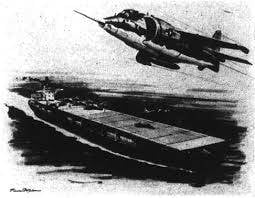
In reality, the study of ARAPAHO showed that appetites should be tempered.
In order for the Harriers to fly freely from a civilian ship, it must be a truly large vessel, uncommon for those times.
Here, for example, is a scaled-up "Harrier" on a specific container ship. Feel what is called the difference.
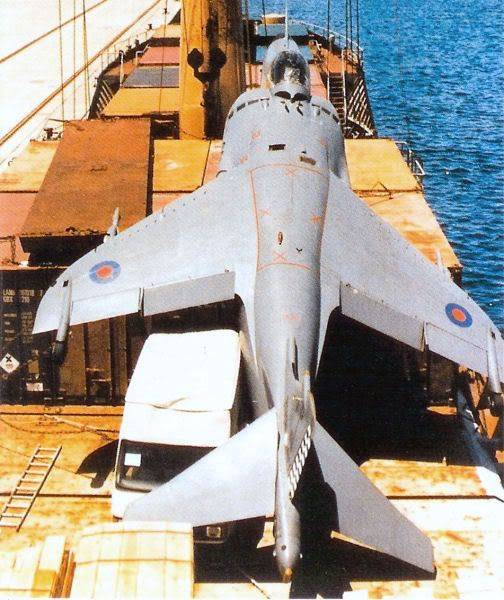
Soon ARAPAHO turned into an ersatz helicopter escort.
In the fall of 1982, the Americans conducted a series of tests on the Export Leader container ship, and closed the topic - Ronald Reagan's 600 ships program was on the way, and ARAPAKO's ersatz helicopter carriers were, as they say, "out of place."
But the poor (in comparison with the United States) British grabbed the idea - especially since they had a successful, as they believed, partially (in comparison with the project) re-equipped Astronomer. The United Kingdom has acquired all the necessary documentation from the United States. And soon "Astronomer" got up to a new re-equipment.
This time the British were serious.
They planned to create not a transport, but a warship. And, moreover, they intended to use it in military operations.
In 1983 the vessel was refitted. Following the conversion to a quasi-combat ship, the ship was renamed Reliant (HMS Reliant).
The ship (now so, yes) received a hangar of a modified design, fuel tanks, communication equipment for flight control. The above-deck structures were made of containers, and various workshops were equipped inside them. The ship was very close in its capabilities to the American project ARAPAHO. And many of today's researchers believe that the Reliant is the only full-fledged ship of such a project.
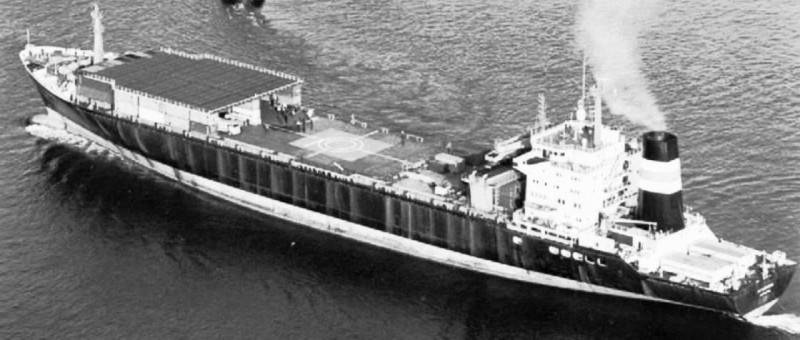

In 1984, a ship with helicopters sailed to the Mediterranean for her first and last combat service.
The task of the ship was to ensure the basing of helicopters capable of operating in the interests of the British peacekeeping contingent in Lebanon.
Alas, the results were disappointing.
The hull of the container ship rocked too much, its dimensions were insufficient, and the contours were inappropriate. The walls of the above-deck structures built from containers let water through, which then flowed below the upper deck.
In some rooms there was ankle-deep water, including in workshops. The very placement of the latter in containers also did not justify itself and turned out to be very inconvenient.
The steel flooring of the runway in the hot Mediterranean climate led to rapid wear of helicopter tires.
In general, ARAPAHO turned out to be a bad idea - in order for the container ship to really become a warship, much more rework was needed.
However, such projects did not arise.
SCADS
ARAPAKHO was more a project of ersatz anti-submarine ships, and there was also an air defense problem.
The USSR had Tu-95 and X-22 anti-ship missiles. In theory, the very logic of confrontation with the West suggested that one day the Russians would fuse this platform and this missile. So, by the way, then it happened, however, the X-22 with the Tu-95 of the Air Force was planned to be used not only (and not so much) against surface targets. Tu-95K-22 appeared in the second half of the 80s, but it was not difficult to predict at the very beginning.
In the case of the British in whose hearts the ashes of the Atlantic Conveyor were still pounding, it was obvious that the matter was not limited to the Russians. It can be anything, and it is highly desirable that the vehicles would be normally protected from air strikes, even if they are not in touch with the Russians. The loss of the Atlantic Conveyor in 1982 greatly complicated the British operations on the ground.
The answer to the problem of providing air defense for transports was the SCADS project - shipborne containerized air defense system. In Russian - ship-based container air defense system.
SCADS consisted of blocks and subsystems of the Sea Wolfe air defense missile system mounted in containers, false target launchers, a hangar for Harriers, with dimensions that were multiples of a container, and assembled from them. A quick-detachable airstrip with a springboard, container containers for aircraft fuel and warehouses located in containers, workshops and everything else that was necessary for the Harriers' flights. It was assumed that together "Harriers" and the air defense system will be able to protect the ship.
At the same time, there would have been room for purely cargo containers - the entire SCADS infrastructure would fit into two levels of containers.
The radars for the complex were made by Plessey, which developed the AWS-5A radar. They also designed the launch facility for decoys. British Aerospace developed the container air defense system, the rest of the container infrastructure and the aircraft themselves. Fairey Engineering made a springboard.
It was assumed that the SCADS kits made and stored in advance could be installed on any container ship of suitable size in 48 hours, which would make it more or less protected from air strikes. The air group was supposed to include an AWACS helicopter.
In general, against a single aircraft with bombs, such a kit would work quite well.
But the topic, as they say, "did not go".
What can be a lot of reasons.
From the required dimensions of the ship to the "one-sidedness" of the project, which is capable of protecting the ship only from a non-massive attack from the air by one or two aircraft, and even then not always.
Let's just say, against the Tu-95K-22 with one or two X-22, the chances of such a complex were not very high. Against a pair of "Tupolev" - about zero With Tu-16 and 22M - it was the same story.
And new Falklands, where such a complex could really become a significant factor, were not planned in the foreseeable future.
As a result, SCADS remained on paper.
Sky hook - sky hook
Another interesting project was the "skyhook" - Skyhook.
At the same time, in the 80s, the British, who loved their wonderful toys "Harriers" without any measure, had another brilliant idea - to equip these aircraft ... No, not merchant ships converted into something, but quite a military ships of the " frigate".
The problem was that the Harrier could only land on such a small object in exceptional circumstances, including zero pitching (for example, in the North Atlantic) and unpredictable pilot luck.
However, with the availability of fuel, this aircraft could easily hover next to a moving ship.
In the bowels of BAE, an idea has matured - what if you hook up planes right in the air with a special grip and then use a crane to put them on the deck? The idea inspired, and work began to boil at the firm.
The result was the sky hook project.
The essence of the idea was as follows.
A special computer-controlled grip was created that could pick up the aircraft and, in a semi-automatic mode, lower it onto the deck on a special landing device. It was assumed that this would make it possible to build ships in the size of a frigate and a destroyer, which would carry 4-8 Harriers each.
However, in order for the idea to start, this very grip was needed, capable of gently picking up a flying jet attack aircraft and gently, without damaging it, lower it onto the deck.
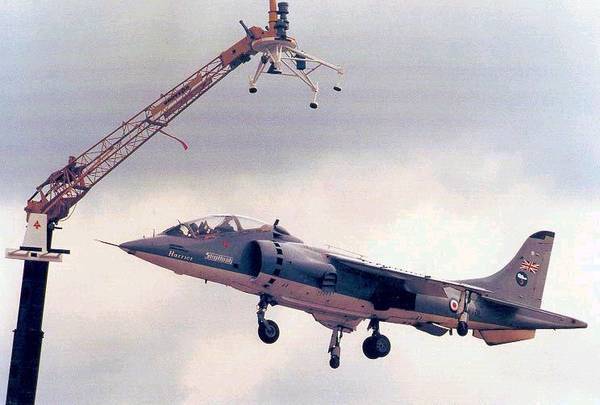
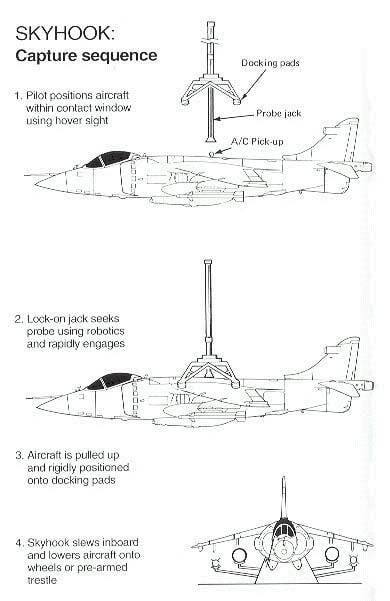
And such a system - the main part of the project - was created!
Both the grappling hook and the 80s advanced computer control system have been successfully tested with real aircraft.
True, due to the fact that these were the first stages of testing, instead of the ship and the sea, the Harrier was caught with an ordinary truck crane.
But they were catching!
The challenge inspired the team to go further. And come up with a plan to fuel the Harriers on the move. Moreover, "hooks" and refueling equipment for this were supposed to be placed not only on ships, but also on oil production platforms.
The project, however, did not go further.
According to the military senselessness, obvious to any unbiased observer.
Skyhook remained a technical curiosity.
To whom it is interesting, here The full text of the US patent for this system has been posted.
Let's return now to the converted civilian ships and aviation on them.
Soviet experiences
There is such a joke:
The experience of the USSR Navy confirms this.
As soon as the Yak-38 flew into the naval aviation, the temptation immediately arose to try to use them from a merchant ship.
For the experiments, the same type of vessel was chosen that the British liked so much - a ro-ro container ship. In our case, these were ships of the B-481 project of Polish construction - "Nikolay Cherkasov" and "Agostinho Neto".
Unlike SCADS, the undertaking in our case was conceived only as a research one, with a view to what, in general, it is, in principle - flights from a merchant ship on a jet plane.
In 1983, two container ro-ro ships were converted into floating take-off and landing sites. Their decks were rearranged, they were equipped with open take-off and landing areas measuring 18 × 24 meters each, the platforms were made on a deck made of heat-resistant steel, which was not destroyed by Yak-38 engines.
September 14, 1983 Colonel Yu.N. Kozlov performed the first flight with Agostinho Neto. Subsequently, 20 flights were performed with "Neto" and 18 more - with "Nikolai Cherkasov".

The conclusions were disappointing, despite the rather large size of the ships, no more than two planes could fly from them, and landing was also extremely inconvenient - the superstructure prevented landing from the stern, it was necessary to do it at an angle to the diametrical (longitudinal) axis of the ship and "hit" into a small area.
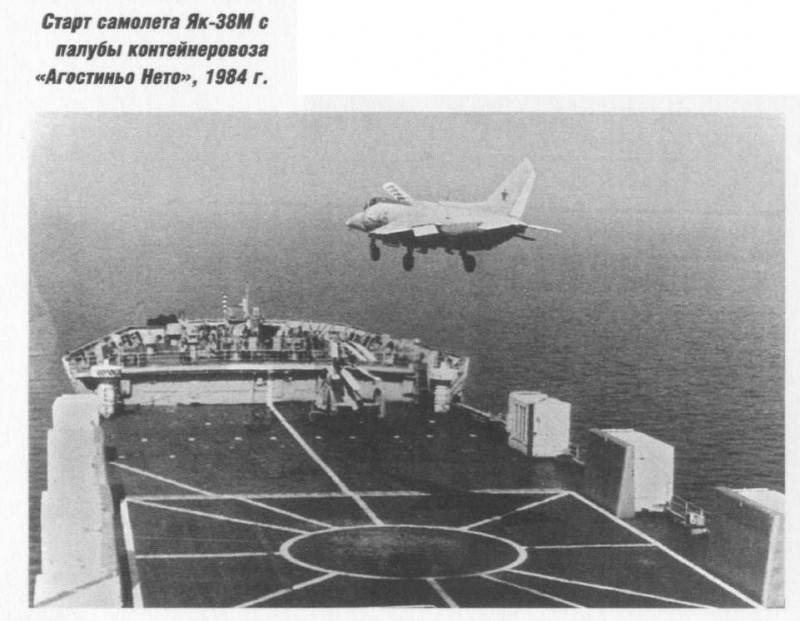
Takeoff and landing were possible only vertically, which greatly limited the combat radius and combat load.
In general, the assessment of the experience gained was extremely contradictory:
These experiments were not further developed "in metal".
Another experiment was not developed either.
From the memoirs of Captain 1st Rank A.E. Soldatenkova:
In the ship register of this organization there was such a mighty vessel as "TRANSSHELF". At its core, it was a giant transport dock ship. It was intended for transportation of offshore drilling platforms over long distances.
On the slipway, stands were built for a specific drilling platform, the ship was immersed in the required recess, the tug platform was brought so that the submerged ship was under it, the ship floated up, and the platform stood on the cage, fastened for subsequent transportation and could be delivered by sea to any part of the planet ...
The Transhelf was of impressive size and unlimited seaworthiness.
The idea arose to use it as a floating VVPP for a link of three MI-14PLO anti-submarine helicopters and one MI-14PS rescue helicopter.
Thanks to their TTD, MI-14 helicopters could stay in the air for up to eight hours. This made it possible to take off from the coastal airfield to perform anti-submarine missions in the seas surrounding Sakhalin Island and land on the Transshelf deployed in advance in the desired direction.
Further refueling, rest or change of crews, maintenance, replenishment of RGAB stocks and ammunition for the continuation of anti-submarine operations with subsequent return to one of the coastal airfields or to "Transhelf".
At that time, there was still an advanced base on the island of Simushir (Broughton Bay), where there were all the conditions for the basing of four MI-14 helicopters.
Thus, the middle of the Sea of Okhotsk became quite attainable for shore-based anti-submarine helicopters. "
The phenomena that preceded the collapse of the USSR and the collapse itself made adjustments to these plans, but the interest is indicative.
The USSR paid great attention to mobilization readiness. The adaptation of merchant and other non-military vessels to possible military service has also received great attention. And, as it is now clear, the possibilities of using aviation from such mobilized ships - too.
Conclusion
Such an opportunity as the conversion of a civil ship into an aircraft carrier has not lost its significance today.
But with a lot of reservations about efficiency, requirements for re-equipment and the ship itself, deviation from which literally collapses the effectiveness of the undertaking.
But a number of countries are not afraid of this. And today he boldly goes to experiments.
Thus, Malaysia put into operation the ship "Bunga Mas Lima", which performs the tasks of a patrol. It has on board and a hangar for a helicopter, and the helicopter itself, and everything you need to use it. This ship is converted from a container ship.
Iran has recently demonstrated the Makran floating base, which is also capable of providing short-term helicopter bases. It is also obtained by rebuilding a merchant ship.
You can laugh at this attempt as much as you like, but the Iranians can already bring this ship somewhere to the shores of Venezuela and carry out some kind of airmobile operations there, while simultaneously supplying the grouping of surface ships and, possibly, submarines with everything necessary (with fuel and food for sure).
This kind of use of converted vessels, when the function of the floating rear prevails over others, may well be successful.
Although for long-term use of helicopters "Makran" is even less suitable than ARAPAKHO, it does not even have a hangar, although the deck is large and it is quite convenient to fly from it. For Iran, by the way, this is not the first experience of such re-equipment.
The British example suggests that, theoretically, a good air transport can turn out from a commercial vessel - if there is time for its full revision. If not, then there is a risk of getting not Astronomer and Contender Bizant, but Atlantic Conveyor.
But the experience of using converted merchant ships precisely as carriers of military aircraft, from which it is used, after the Second World War, is still rather negative.
The hulls of these vessels do not have acceptable seaworthiness, even if they are large in size. The re-equipment does not provide the convenience of using aircraft, comparable to ships of special construction. The very possibilities of quick and not very expensive rebuilding of the ship's hull are limited. Placing a strong air group on them is impossible.
This is superimposed on such specific features of purely civilian shipbuilding as the absence in the ship's design of solutions aimed at increasing combat survivability, and the speed insufficient for a warship.
The experience of operating the Malaysian ship is more or less positive. The rest were much worse. However, perhaps the Iranians will be able to surprise.
There is one more point that has been ignored in all cases, except for the SCADS project - radio-electronic and communication equipment for flight control.
Without such complexes, it is impossible to organize not just takeoff and landing, but precisely the combat work of aviation. And this equipment is expensive and complex, although in some primitive version it can probably be "containerized". But precisely what is primitive.
In any case, an aircraft carrier from a container ship cannot be made in this way.
And a full-fledged aviation control complex is many tens of tons of equipment for billions of rubles.
However, we will make a reservation.
A ship in which, during construction, the possibility of converting into a warship is provided, with the addition of additional diesel generators, laying cables, installing protected compartments in the lower part of the hull (preferably below the waterline) for storing aircraft weapons, with contours somewhat more optimized for speed and seaworthiness, rather than "purely" civilian ships, can be an ersatz warship.
Bad, of course.
But such a ship will be able to carry several helicopters on board. And not in an ARAPAHO style chicken coop assembled from containers, but in a normal hangar. That would take off from a normal take-off area with a suitable surface.
Such a ship can have a mini-GAS for detecting torpedoes coming at it, installed during re-equipment, several launch tubes or standard TPK with anti-torpedoes, the same modular air defense systems (with all their disadvantages), fuel reserves and places for personnel.
It really can be put as a carrier of anti-submarine helicopters to guard the convoy. Or use it in anti-pirate operations (remembering several helicopters). And in simple cases - against a weak opponent. And if he has launching and lifting devices for high-speed boats and boats themselves - even to support the actions of special operations forces at a distance from available bases.
It can be by air. And in an amphibious operation, helicopters for various purposes can be lifted from it.
In operations where the risk of losing such a ship is small, it could carry communications equipment and a command post on board. Flight control could be taken over by a corvette operating in conjunction with such a ship.
In conditions of an acute shortage of ship personnel, such things are possible, but it is necessary to prepare for them in advance, preferably at the design stage of the original civilian ships. Tactical application models are also needed. And also in advance.
If all of the above requirements are met, the ship can turn out to be quite good, although it will be inferior to warships of special construction in everything.
It is for the quick conversion of ships into warships according to this option that various modular and container systems can be useful, which for normal ships actually proved to be a stillborn concept.
Another interesting takeaway concerns aircraft.
Namely, aircraft with short or vertical takeoff and vertical landing.
And the conclusion is this. The deployment of basing jet aircraft on ships that were initially unsuitable for this is the only niche where SCVVPs are really irreplaceable. In all other cases, this is not the case. And with a certain level of organizational effort, such planes can almost always be dispensed with, having received something significantly more useful for their cost.
But if the question arose of rebuilding container ships into ersatz aircraft carriers for the same escort tasks, or the use of aircraft in air defense of convoys (the same SCADS), then "verticals" become almost no alternative means.
On a long through deck (more than 250 meters), besides them and helicopters, light attack aircraft such as "Bronco" and the like can also be based, which on such a ship does not need catapults, jumps, or finishers. But this is rather an exception, such a deck still needs to be done somehow. We still need to find such a vessel for re-equipment. At the same time, one must remember about the above-mentioned serious disadvantages of such ships, even if there is no choice left and they have to be made, the concept's shortcomings will not disappear anywhere. They just have to endure.
Accordingly, if military plans do not provide for the deployment of combat aircraft on every large "trough", then you can easily do without "vertical". In all other cases, they are not the only possible or irreplaceable solution.
Themselves such ersatz ships must be thought out in advance and prepared for their re-equipment as carefully as possible.
Otherwise it will be a fiasco.
These are the conclusions drawn from relatively recent experience.
Both ours and foreign.
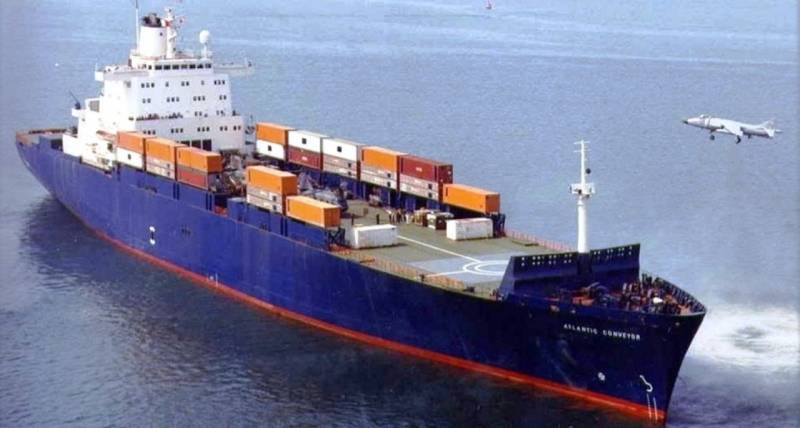
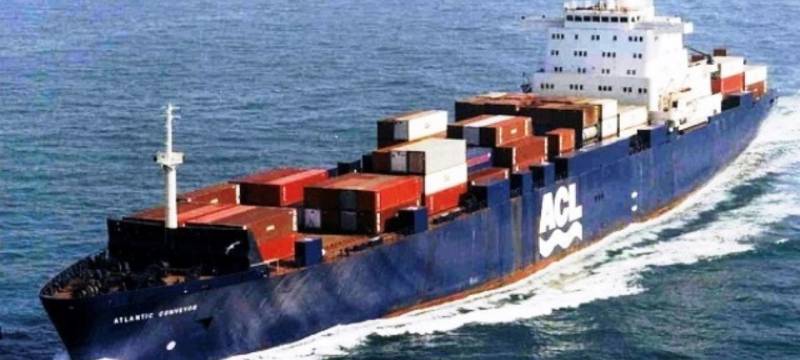
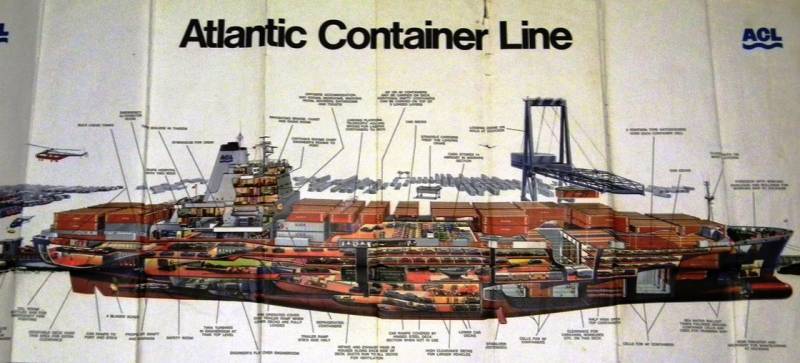
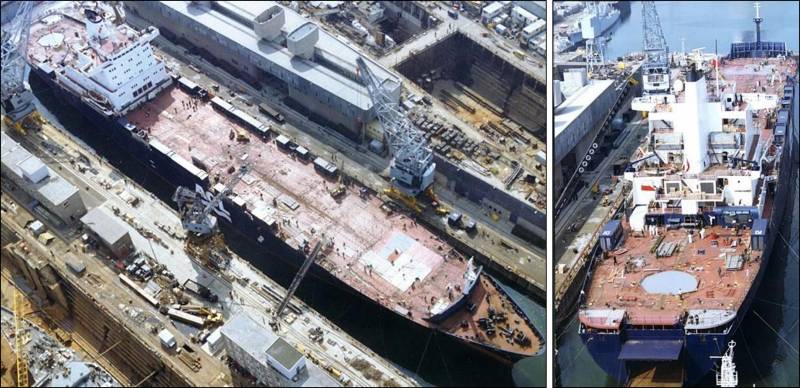
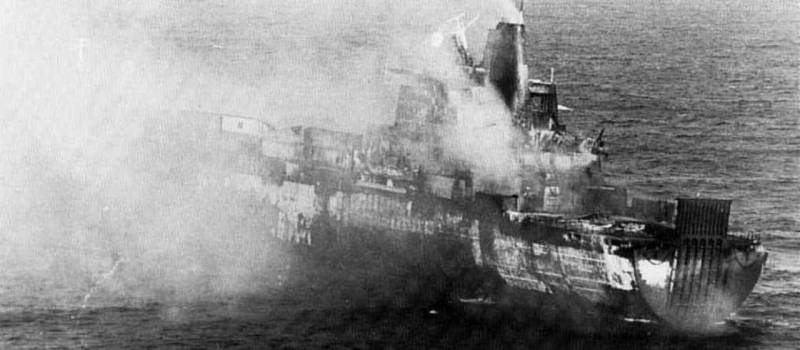
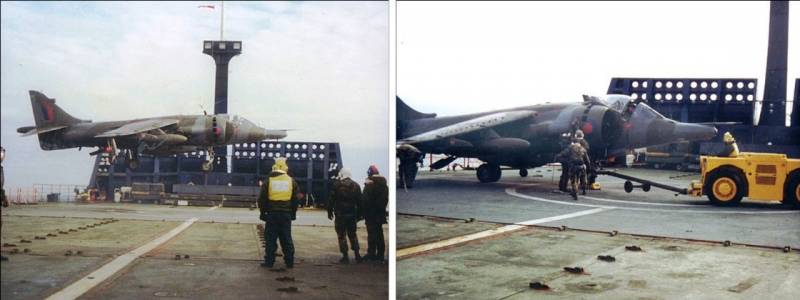
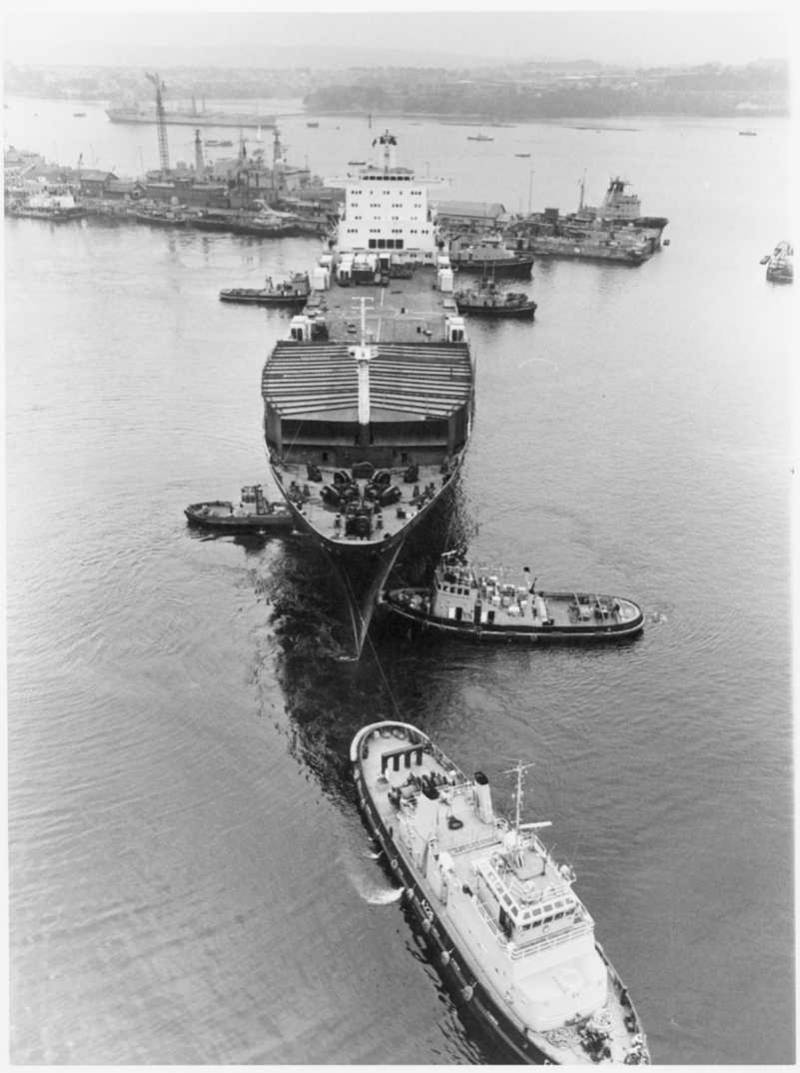
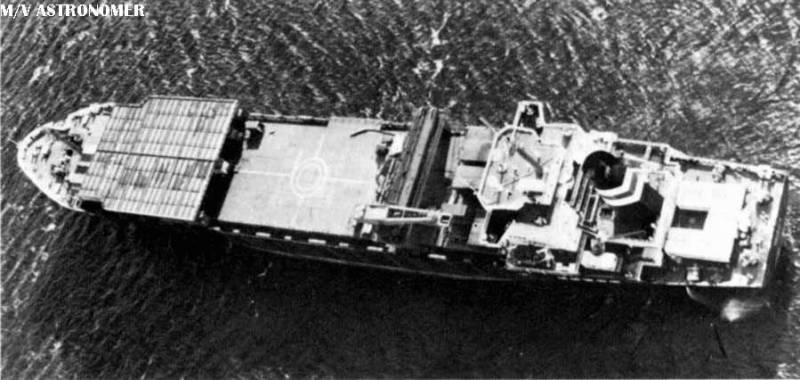
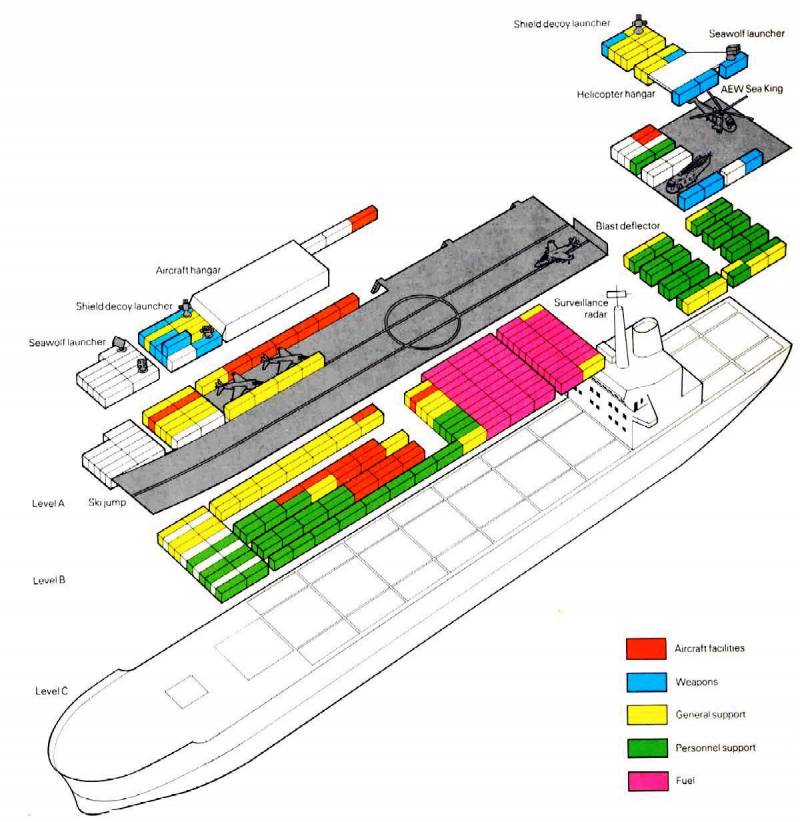
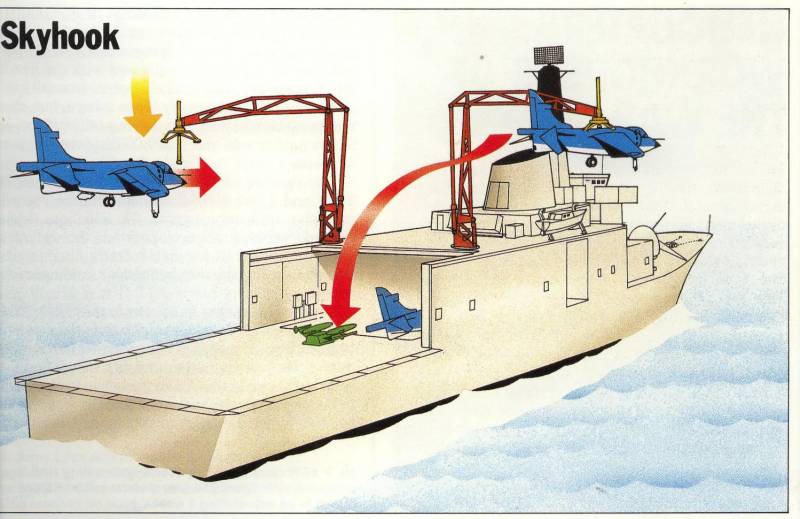
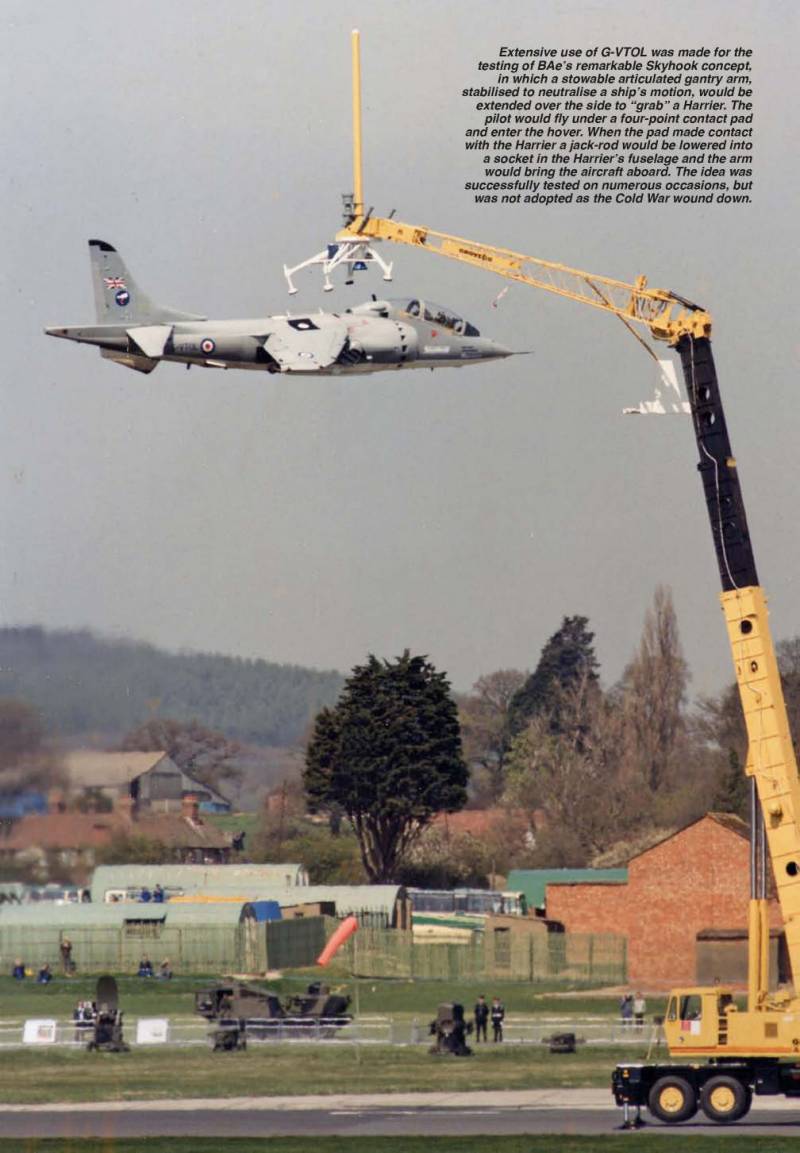
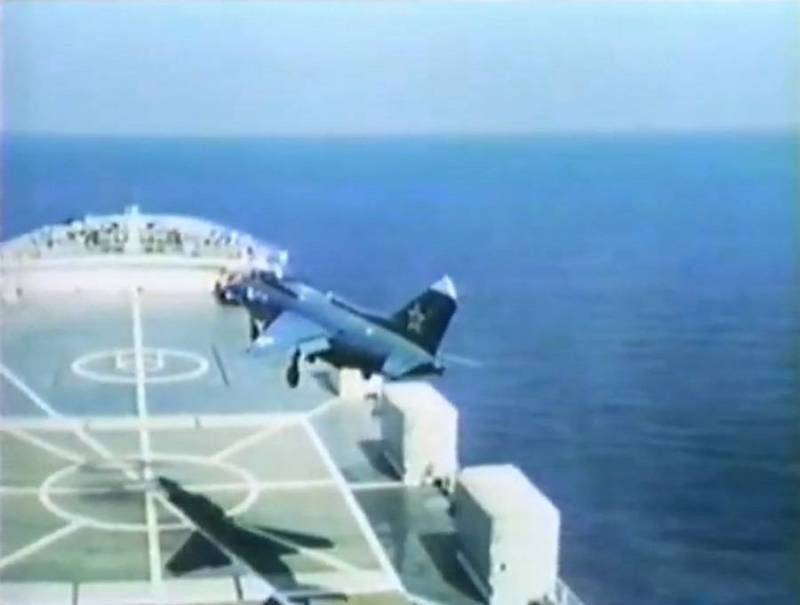
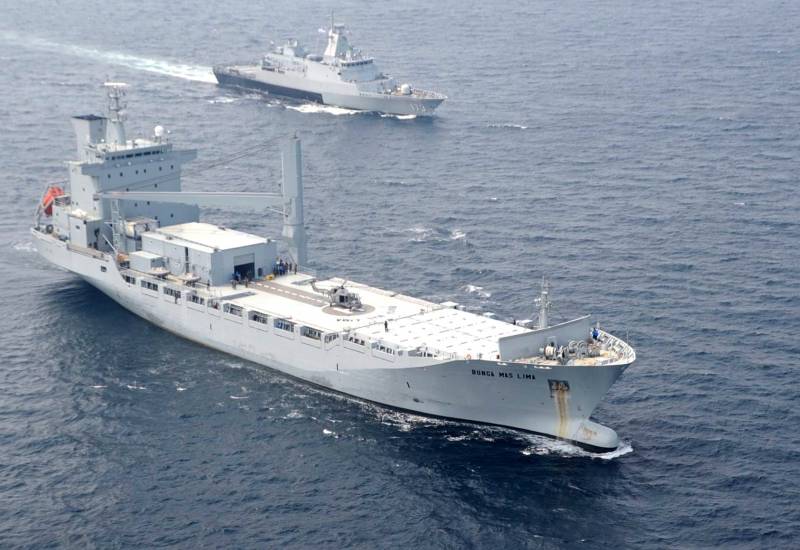
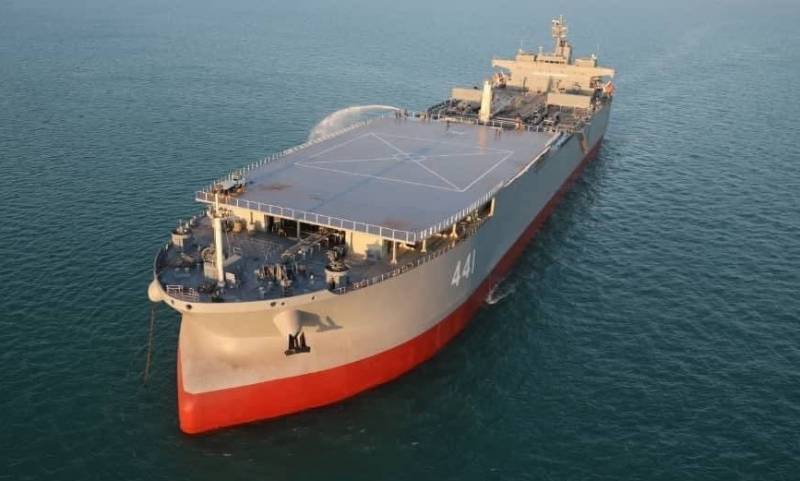
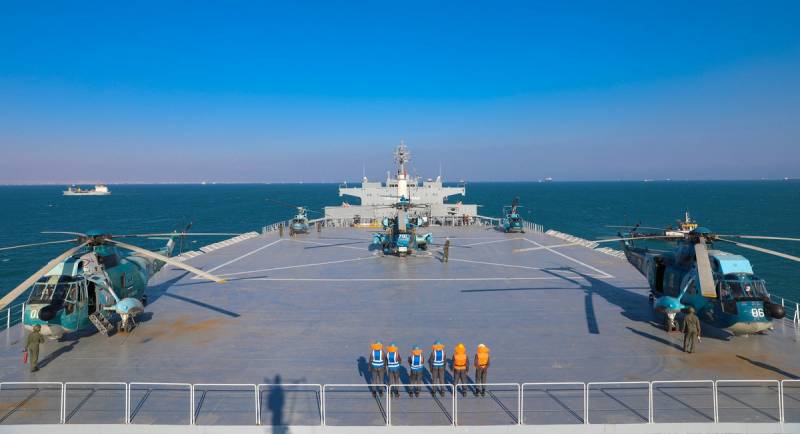
Information